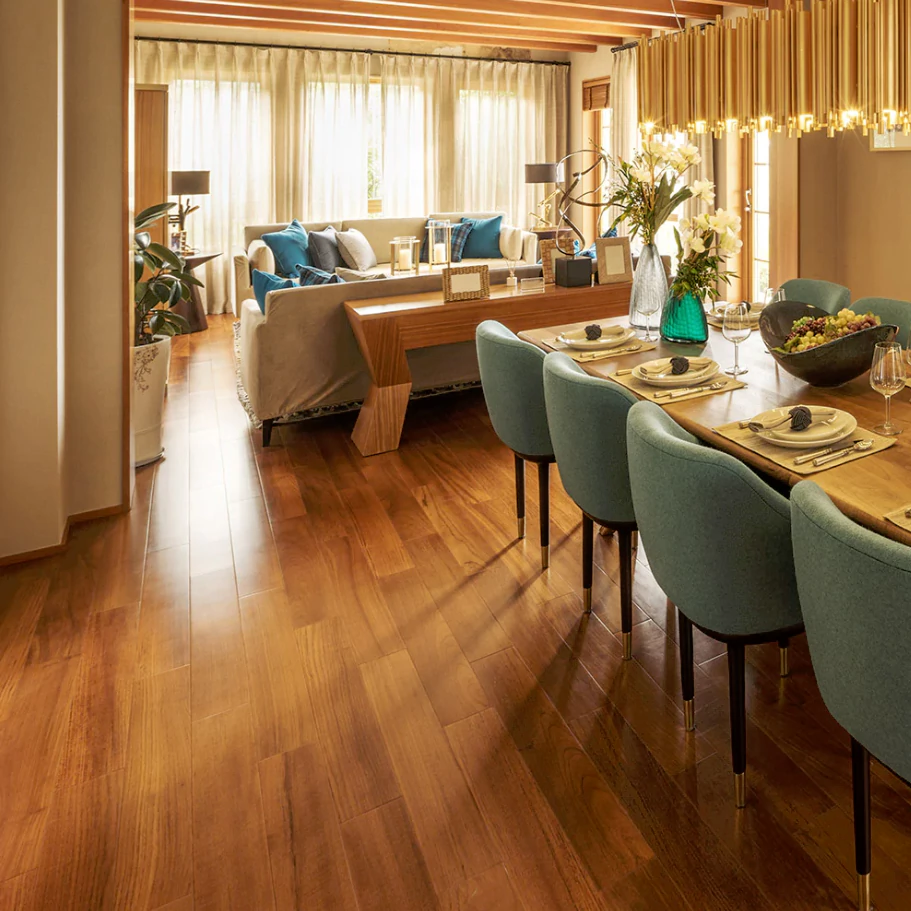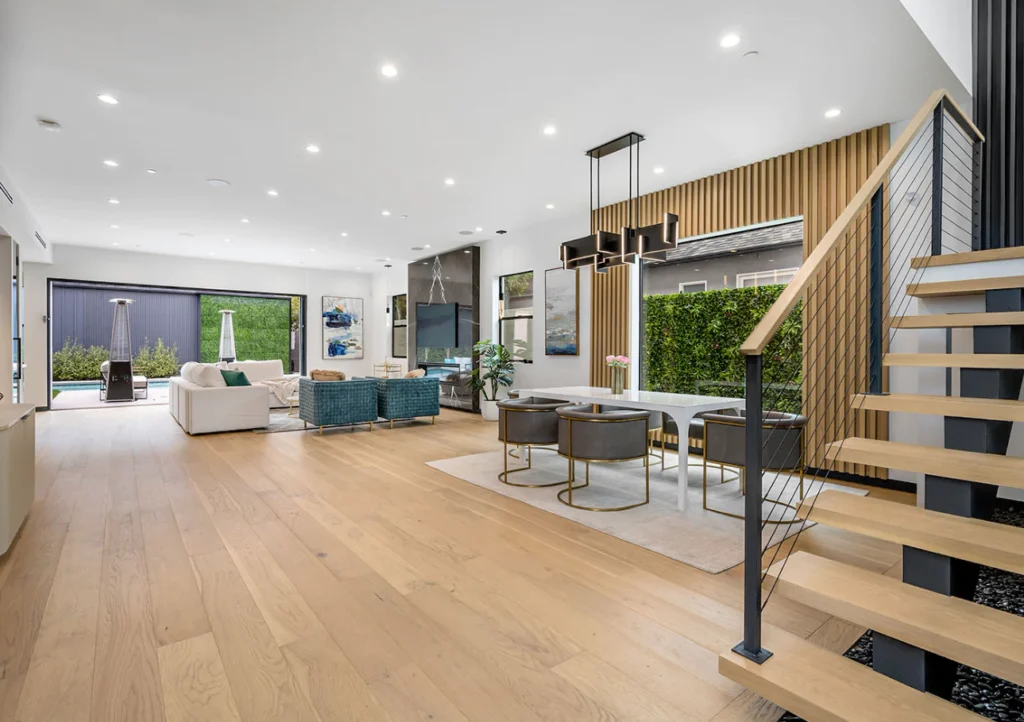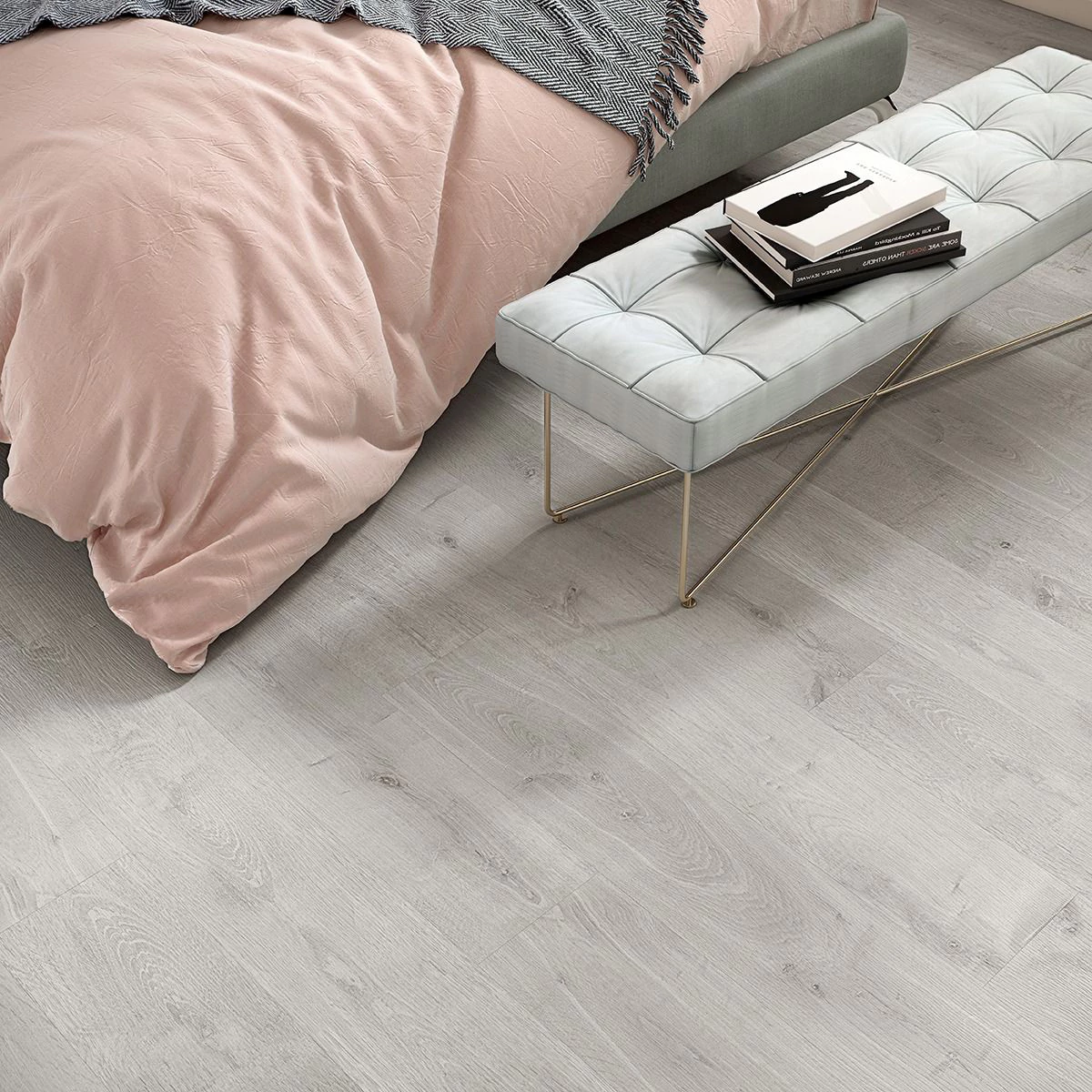When it comes to designing or renovating your home, flooring is one of the most important decisions you’ll make. It affects not just how your space looks, but also how it feels and functions every day.
The right flooring for a house depends on your lifestyle, the room’s purpose, your maintenance preferences, and, of course, your budget. In this guide, we’ll break down everything you need to know to help you confidently choose the best flooring for your home.

What Is the Best Flooring for Your Home?
The best flooring for your home is the one that matches your lifestyle, budget, and design preferences, because no single flooring type fits every household. Hardwood flooring is considered the gold standard due to its timeless look and long lifespan, but it can be costly and sensitive to moisture.
On the other hand, luxury vinyl plank (LVP) and laminate offer a more budget-friendly, water-resistant alternative that mimics wood or tile, making them ideal for busy or high-traffic areas.
Tile is perfect for wet spaces like bathrooms or kitchens, offering excellent durability and a wide range of design choices. If comfort and warmth are a priority, especially in bedrooms, carpet may be the best fit, though it requires more upkeep.
Ultimately, the best flooring comes down to how you live in your space, whether you have pets or kids, and how much maintenance you’re willing to handle.
Which Flooring Types Work Best In Different Rooms?
The flooring type that works best in different rooms is tile for bathrooms and kitchens, hardwood or laminate for living rooms and hallways, and carpet for bedrooms. In basements or moisture-prone areas, vinyl or concrete flooring works better due to its resistance to water and mold
The flooring types that work best in different rooms include the following:
- Living Room: Hardwood or laminate is perfect for the living room. They offer a warm, stylish look that elevates your main gathering area. Hardwood is durable and long-lasting but sensitive to moisture; laminate is more budget-friendly and easier to install, but not as durable over the decades.
- Bedroom: Carpet provides warmth, softness, and sound insulation—ideal for comfort and relaxation. However, it stains easily and needs frequent vacuuming to stay fresh, especially in homes with pets or allergies.
- Kitchen: Tile or luxury vinyl plank (LVP) options are water-resistant and easy to clean, making them perfect for spills and heavy foot traffic. Tile is more durable but cold underfoot; LVP is warmer and softer but may dent under extreme weight.
- Bathroom: Porcelain or ceramic tile are fully waterproof, slip-resistant, and built to withstand humidity. Their main downside is that they feel cold and hard, requiring mats or radiant heating for added comfort.
- Basement: Vinyl, concrete, or engineered wood materials handle moisture well and resist mold and warping. Solid hardwood is not recommended here due to the risk of moisture damage.
- Hallways & Entryways: Laminate, tile, or engineered hardwood flooring types handle heavy traffic and still look polished. Tile is the most scratch-resistant; laminate and engineered wood offer better warmth but need more care.
How Do I Choose Between Hardwood, Laminate, Vinyl, Carpet, Or Tile?
You choose between hardwood, laminate, vinyl, carpet, and tile by considering your lifestyle, budget, and the room’s function. For example, if you have pets or kids, vinyl or laminate may be better due to their durability and low maintenance.
If you’re after a premium look for a main living area, hardwood adds long-term value but costs more upfront. Carpet works well in bedrooms for comfort, while tile is unbeatable for wet areas like kitchens and bathrooms. Your final choice should balance appearance, function, and long-term upkeep.
The table below shows the things to consider when choosing a flooring type:
| Flooring Type | Best For | Pros | Cons |
| Hardwood | Living rooms, dining rooms | Long-lasting, adds resale value, elegant finish | Expensive, not moisture-resistant, needs maintenance |
| Laminate | Hallways, bedrooms, budget renovations | Affordable, scratch-resistant, easy to install | Can’t refinish, water damage risk, feels less natural |
| Vinyl (LVP/LVT) | Kitchens, bathrooms, basements | Waterproof, low-maintenance, realistic designs | Can dent or fade, not as premium as wood |
| Carpet | Bedrooms, family rooms | Soft, warm, sound-absorbing | Stains easily, traps dust/allergens, wears out faster |
| Tile (Ceramic/Porcelain) | Bathrooms, kitchens, laundry areas | Waterproof, durable, easy to clean | Cold underfoot, hard surface, grout maintenance |
Are Engineered Or Solid Wood Floors More Durable And Worth The Investment?
Yes, both engineered and solid wood floors are durable and worth the investment, but in different ways depending on your needs.
Solid wood flooring is made from a single piece of timber and can be sanded and refinished multiple times, which means it lasts for decades with proper care. It’s ideal for areas where you want a long-term, classic look and don’t have to worry about high moisture levels. However, it’s more expensive and more sensitive to humidity and temperature changes, which causes it to warp or expand.
Engineered wood, on the other hand, is made with a top layer of real wood bonded to multiple layers of plywood underneath. This layered structure makes it more stable in humid environments, such as basements or homes with underfloor heating.
It usually can only be refinished once or twice, depending on the thickness of the top layer, but engineered wood floors are still a smart, budget-conscious way to get the hardwood look with added flexibility.
Is Luxury Vinyl Plank (LVP) The Future Of Home Flooring?
Yes, luxury vinyl plank (LVP) is increasingly considered the future of home flooring, especially for busy households and budget-conscious renovations.
LVP combines style, durability, and practicality in one package. It mimics the look of real wood or stone while offering superior water resistance, making it perfect for kitchens, bathrooms, and basements.
It’s also easy to install (even as a DIY project) and requires minimal maintenance. Compared to traditional hardwood or tile, LVP is more affordable and less prone to damage from moisture or heavy foot traffic.
While LVP may not add as much resale value as hardwood, its versatility and performance make it a top modern choice for everyday living.

What Eco-Friendly Or Sustainable Flooring Options Are Available?
The eco-friendly or sustainable flooring options available include bamboo, cork, reclaimed wood, recycled tile, and linoleum. Bamboo is a fast-growing renewable resource that offers a similar look and feel to hardwood while being more environmentally friendly.
Cork flooring, made from the bark of cork oak trees, is naturally antimicrobial, soft underfoot, and harvested without harming the tree itself.
Reclaimed wood gives old timber new life and adds character to any space without requiring additional deforestation. Recycled tiles made from glass or ceramics are also sustainable, especially for bathrooms and kitchens.
Lastly, natural linoleum, often confused with vinyl, is made from linseed oil, cork dust, and wood flour, making it biodegradable and a great non-toxic option for homes prioritizing indoor air quality.
Which Flooring Options Are Easiest To Maintain And Clean?
The flooring options easiest to maintain and clean are vinyl, laminate, tile, and sealed hardwood. Vinyl flooring is highly resistant to water, scratches, and stains—it only needs regular sweeping and occasional mopping to stay looking new. Laminate is also simple to care for, though it should be kept dry to avoid warping.
Tile is ideal for mess-prone areas like kitchens and bathrooms; it resists moisture and can be scrubbed clean with minimal effort. Sealed hardwood is fairly easy to maintain too, as long as it’s kept dry and protected from dents. If low-maintenance living is your goal, these options give you both durability and convenience.
What Flooring Options Are Best For Households With Kids Or Pets?
The flooring options best for households with kids or pets include vinyl, laminate, tile, and engineered wood. Vinyl flooring is one of the top choices because it’s water-resistant, easy to clean, and soft enough to cushion falls, making it ideal for young children and active pets.
Laminate is scratch-resistant and handles wear and tear well, though it needs to be kept dry to prevent swelling.
Tile is nearly indestructible and doesn’t stain or trap odors, but its hard surface can be slippery and less forgiving for toddlers. Engineered wood offers the aesthetic of hardwood with more stability and durability under pressure from claws or toy impacts.
These materials help keep your floors looking great, even in the messiest and busiest of households.
Conclusion
Choosing the best flooring for your home is all about finding the right balance between style, functionality, and daily living needs. Whether you’re drawn to the timeless elegance of hardwood, the practicality of vinyl, or the cozy comfort of carpet, each option offers unique benefits depending on where and how it’s used.
By considering factors like moisture exposure, foot traffic, ease of cleaning, and your household lifestyle, you’ll be able to make a smart, long-lasting investment in your space.


